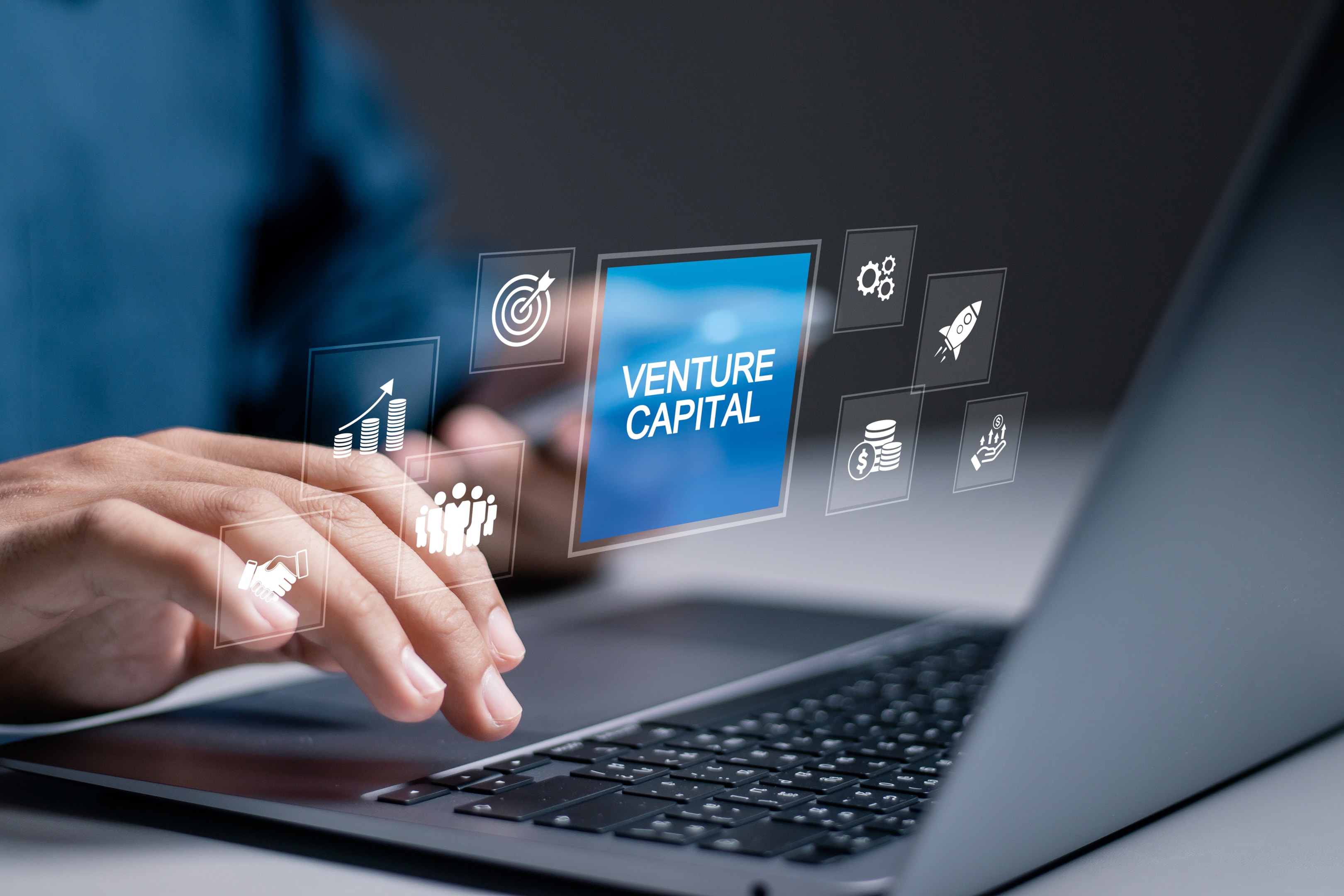The Startups Team

When it comes to types of startup funding, there are a lot of options to consider.
Startups in the early stages need to raise startup capital or funding to survive past the business idea (at minimum) but looking into all the types of funding can be overwhelming to a budding entrepreneur. If you've never heard about pre-seed funding, equity stake, or venture capital funds, we are going to dive into how to raise funds for startups, and the difference between all the funding sources out there.
So, what do all the types of startup funding mean? What are angel investors? How does series funding work? What does equity funding entail? What's the best way to land an investment from a venture capital firm? Is self-funding and crowdfunding actually legitimate? Is external startup funding the best option?
As Startups.com Founder and CEO Wil Schroter likes to say, “There's no ‘fun' in funding.'” But it doesn't have to be terrifying, either. There are many different funding options to navigate in the early stages of a startup.
Let's explore the five most common types of startup funding sources, with links to more detailed explorations of each type of startup business funding here.

1. Series funding
Series funding is when a startup raises rounds of funds, each one higher than the next and each one increasing the value of the business. It's described alphabetically: Series A, B, C, D, and E.
Series A
Once a startup makes it through the pre-seed funding stage and it has some kind of traction — whether it's number of users, revenue, views, or any other key performance indicator (KPI) — they're ready to raise a Series A funding round.
The average Series A round is now $9.3 million.
Series A startup funding usually comes from venture capital firms, although angel investors may also be involved. Additionally, more companies are using equity crowdfunding for their Series A.
Series A is a point at which many startups tend to fail. In a phenomenon known as “Series A crunch,” even startups that are successful with their seed round often have trouble securing a Series A round.
Series B
A startup that reaches the point where they're ready to raise a Series B funding round has already found their product/market fit and needs help expanding.
The big question here is: Can you make your company work at scale? Can you go from 100 users to a 1,000? How about 1 million?
A Series B funding round now averages $21 million. Companies can expect a valuation north of $60 million.
Series B funding usually comes from venture capital firms, often the same investors who led the previous round. Because each round comes with a new valuation for the startup, previous investors often choose to reinvest in order to ensure that their piece of the pie is still significant.
Companies raising a series B funding round may also attract the interest of venture capital firms that invest in late-stage startups.
Series C
Companies that make it to the Series C stage of funding are doing very well and are ready to expand to new markets, acquire other businesses, or develop new products.
Series C is often the last round that a company raises, although some do go on to raise Series D and even Series E round — or beyond. However, it's more common that a Series C round is the final push to prepare a company for its IPO or an acquisition.
For its Series C, startups typically raise an average of $26 million. Valuation of Series C companies often falls between $100 million and $120 million, although it's possible for companies to be worth much more, especially with the recent explosion funding valuation of “unicorn” startups.
Valuation at this stage is based on hard data points, like:
How many customers does the company have?
How much revenue has the company generated?
What is the company's current and projected growth rate?
Series C funding typically comes from venture capital firms that invest in late-stage startups, private equity firms, banks, and even hedge funds.
Series D
"Series D funding is a little more complicated than the previous startup funding rounds. As mentioned, many companies finish raising capital during a Series C. However, there are a few reasons a company may choose to continue on to Series D.
1. Expansion Opportunities: Before opting to go IPO, a company might discover a new opportunity for expansion and just need another boost to get there. Many companies raise Series D rounds (or beyond) to increase their value before going public. Alternatively, some companies want to stay private for longer than was once common.
2. Down Round: When a company hasn't hit the expectations laid out after raising their Series C it's called a “down round." It also refers to when a company raises money at a lower valuation than they raised in their previous round.
Series D rounds are typically funded by venture capitalists. The amount raised and valuations vary widely, especially because so few startups reach this stage.
Series E
If few companies make it to Series D, even fewer make it to a Series E. Companies that reach this point often raise for many of the reasons listed in the Series D round:
They've failed to meet expectations
They want to stay private longer
They need a little more help before going public

2. Crowdfunding
Crowdfunding is a method of raising capital through the collective effort of friends, family, customers, and individual investors.
This approach taps into the collective efforts of a large pool of individuals — primarily online via social media and crowdfunding platforms — and leverages their networks for greater reach and exposure.
Crowdfunding is essentially the opposite of the mainstream approach to business finance. Traditionally, if a person wants to raise capital to start a serious business venture or launch a new product, they would need to pack up their , market research, and prototypes, and then shop their idea around to a limited pool or wealthy individuals or institutions.
These funding sources include:
Banks
Angel investors
Venture Capitalists
This fundraising approach is like a funnel, with the entrepreneur and their pitch at the wide end and the audience of investors at the closed end. Fail to point that funnel at the right investor or firm at the right time, and that's time and money lost.
Crowdfunding platforms, on the other hand, turns that funnel on-end. By giving the entrepreneur a single platform to build, showcase, and share pitch resources, this approach dramatically streamlines the traditional business model.
Traditionally, entrepreneurs spend months sifting through their personal networks, vetting potential investors, and spending their own time and money to get in front of them.
With crowdfunding, it's much easier for entrepreneurs to raise money, get their opportunity in front of more interested parties and give them more ways to help grow the business, from investing thousands in exchange for convertible debt or equity to contributing $20 in exchange for a first-run product or other rewards.
So, what are the options if you can't raise any more funding?
3. Loans
A small business startup loan is any type of loan that helps businesses with little to no traditional business loan history. It's one of many financing options for founders who are looking to either get started or improve their young companies.
Small business startup loan is an umbrella term under which a few different types of small business grants and financing fall.
Here's a general breakdown of the main types of various small business loans and startup loans you might run across as you're figuring out the best option for financing your startup.
1. SBA loans
An SBA small business loan is a loan that is backed by the Small Business Administration (SBA).
Founded in 1953, the SBA is a federal government program that provides support to small business owners in the form of mentorship, workshops, counseling, and small business loans
While the loans are backed by the SBA, they don't come directly from the SBA. You'll have to find a local lender who provides SBA loans in order to access the funding.
2. Credit cards
While not a traditional “loan,” many traditional business loans and credit cards are a great option for very early-stage startups who need help getting going.
Choose one with a 0% introductory APR, because that means that as long as you're able to pay off the balance each month (or at least by the end of the first year, which is when most credit cards' interest rates kick in), you're basically getting a free loan.
However, beware of high interest rates — and don't overestimate how quickly you'll be able to pay back a credit card. Once that introductory period is over, any balance you're carrying will likely come with a hefty interest rate.
3. Short term loans
Short-term loans are relatively small amounts of money that have to be paid back within three to 18 months.
They're often used as a stop-gap when a company is having cash flow problems, for emergencies, or to help companies take advantage of a new business opportunity.
4. Friends and family
Getting money — in the form of loans or investments — from family and friends is another one that doesn't fall under traditional “small business startup funding and loans.” But it's a common way for startup founders to get money from pre-seed funding to either start their companies or get help along the way.
Friends and family are a great source of early investment or loans — but it can be a tricky relationship to navigate.
It's common for people to feel like they can be casual and personal with these types of investments because their relationships with the investors are personal.
That's a mistake.
You should treat an investment or loan from friends and family as a professional addition to your personal savings and your existing personal relationships. It's a good idea to get a written contract stipulating the terms of the investment or loan and also to make it clear that it's very, very likely they won't get their money back if it's an investment.

4. Venture Capital
Venture capital investment is funding that's invested in startups and small businesses that are usually high-risk, but also have the potential for exponential growth.
The goal of venture capitalists is a very high return for the venture capital firm, usually in the form of an acquisition of the startup or an IPO.
Venture capital is a great option for startups that are looking to scale big — and quickly. Because the investments are fairly large, your startup has to be prepared to take that money and grow.
Venture Capitalists usually run by a handful of partners who have raised a large sum of money from a group of limited partners (LPs) to invest on their behalf.
The LPs are typically large institutions, like a State Teachers Retirement System or a university who are using the services of the VC to help generate big returns on their money.
The partners have a window of 7 to 10 years with which to make venture investments, and more importantly, generate a big return. Creating a big return in such a short span of time means that VCs must invest in deals that have a giant outcome.
These big outcomes not only provide great returns to the fund, they also help cover the losses of the high number of failures that high-risk investing attracts.

5. Angel Investors
Angel investors are typically high net-worth individuals who look to put relatively small amounts of money into startups, typically ranging from a few thousand dollars to as much as a million dollars.
Angel investors are often one of the more accessible forms of early-stage capital for an entrepreneur and as such are a critical part of the equity fundraising ecosystem.
The most beneficial aspect in working with an angel investor is that they can usually make an investment decision on their own. Not having to manage a partnership or corporate hierarchy of decision-making or financial advisor allows the angel investor to make bets that they feel comfortable with personally.
Often this is what an entrepreneur needs early in their startup's development.
Angels also tend to have subject matter expertise in a particular area, often where they have made money before. This helps the entrepreneur in a couple of huge ways.
First, they won't waste the entrepreneur's time asking uninformed questions because they already know the space.
Second, they tend to be well-connected in particular industries, so the value of their investment also includes the resources they can bring to help the venture in the future.
Unlike what the term may imply, an angel investor isn't a happy angel falling from the sky that is there to answer your dreams with a big fat check (although that sure would be nice).
Angel investors do not bail people out of personal or business credit problems. They do not make charity investments because an entrepreneur feels their idea is really important to the world. They make investments to make a healthy return on their investment – rarely otherwise. Angel Investor Networks
Angels often band together to form angel investor networks. Since every angel has to sift through the same types of deals over and over, it helps to share deal flow and combine resources to find great deals.
Angel investor networks are really useful to entrepreneurs because they tend to have a more formalized process for reviewing new submissions and can also introduce the entrepreneur to a lot of new angels at once.
Think of working with an angel investor network as a way to broadcast your deal to a large number of qualified candidates all at once. In some cases even if the network itself does not invest as a group, you may attract the attention of a particular angel in the network who decides to invest.
There is no definitive limit on how much funding what a single angel investor can invest, but a typical range would be from as little as $5,000 to as much as $5,000,000, although most angels tend to cap out around $500,000.
Angels may also invest incrementally, offering you a small investment now with the opportunity to follow on at a later date with additional investment, typically when something important happens with the whole business plan.
Other Funding Sources
Don't miss our guides to the full range of startup funding options, below.
Federal Government Grants for Small Business: What You Need to Know
Venture Capital: What It Is & Why Use It
Series A, B, C, D, and E Funding: How It Works
Types of Crowdfunding: Donation, Rewards, and Equity-Based
Private Investors for Startups: Everything You Need to Know
Convertible Notes (aka Convertible Debt): The Complete Guide
Find this article helpful?
This is just a small sample! Register to unlock our in-depth courses, hundreds of video courses, and a library of playbooks and articles to grow your startup fast. Let us Let us show you!
Submission confirms agreement to our Terms of Service and Privacy Policy.
Already a member? Login
No comments yet.
Start a Membership to join the discussion.
Already a member? Login